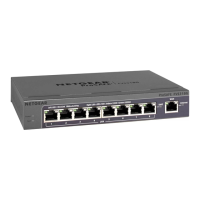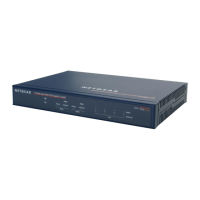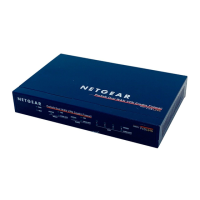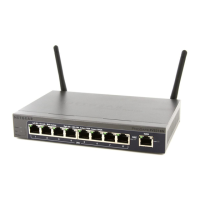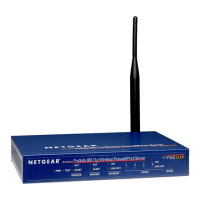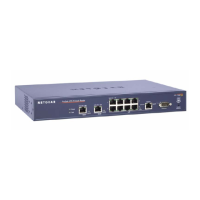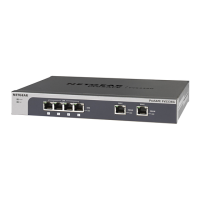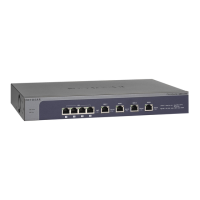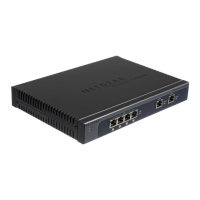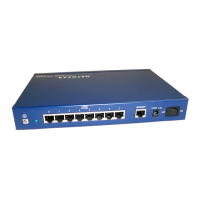LAN Configuration
119
ProSecure Unified Threat Management (UTM) Appliance
4. Click Apply to save your settings.
Static Route Example
In this example, we assume the following:
• The UTM’s primary Internet access is through a cable modem to an ISP.
• The UTM is on a local LAN with IP address 192.168.1.100.
• The UTM connects to a remote network where you need to access a device.
• The LAN IP address of the remote network is 134.177.0.0.
When you first configured the UTM, two implicit static routes were created:
• A default static route was created with your ISP as the gateway.
• A second static route was created to the local LAN for all 192.168.1.x addresses.
With this configuration, if you attempt to access a device on the 134.177.0.0 remote network,
the UTM forwards your request to the ISP. In turn, the ISP forwards your request to the
remote network, where the request is likely to be denied by the remote network’s firewall.
In this case, you need to define a static route, informing the UTM that the 134.177.0.0 IP
address should be accessed through the local LAN IP address (192.168.1.100).
The static route on the UTM needs to be defined as follows:
• The destination IP address and IP subnet mask need to specify that the static route
applies to all 134.177.x.x IP addresses.
• The gateway IP address needs to specify that all traffic for the 134.177.x.x IP addresses
should be forwarded to the local LAN IP address (192.168.1.100).
• A metric value of 1 should work since the UTM is on the local LAN.
• The static route can be made private only as a precautionary security measure in case
RIP is activated.
Authentication for
RIP-2B/2M required?
(continued)
Not Valid Before The beginning of the lifetime of the MD5 key. Enter the month,
date, year, hour, minute, and second. Before this date and
time, the MD5 key is not valid.
Not Valid After The end of the lifetime of the MD5 key. Enter the month, date,
year, hour, minute, and second. After this date and time, the
MD5 key is no longer valid.
Table 25. RIP Configuration screen settings (continued)
Setting Description
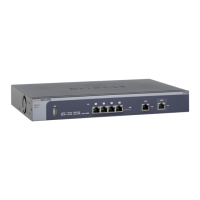
